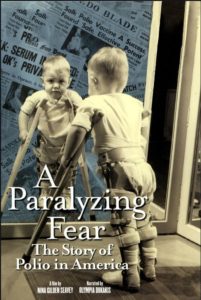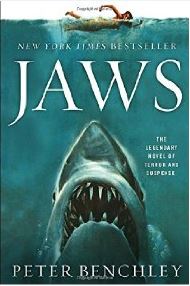 The Coronavirus not only took us by surprise in winter, but we seem to have lost the spring. It canceled weeks of our scheduled lives: vacations, business trips, conferences, weddings, and birthdays have vanished in the confusing fog that has become enduring COVID-19. We are fated to remember these past two or three months, and more that will follow. How we first processed the news, what we lost and grieved, and where we socially isolated, will be memories we share.
The Coronavirus not only took us by surprise in winter, but we seem to have lost the spring. It canceled weeks of our scheduled lives: vacations, business trips, conferences, weddings, and birthdays have vanished in the confusing fog that has become enduring COVID-19. We are fated to remember these past two or three months, and more that will follow. How we first processed the news, what we lost and grieved, and where we socially isolated, will be memories we share.
I was born in 1952, the summer that the notorious poliomyelitis epidemic approached its most significant number of cases – over 59,000. Of course, I recollect none of those first few years of life and how the terror of polio may have touched my family and friends. I have no idea if I received the Salk vaccine, by injection, in the 50s. I may have, instead, received the sugar cube vaccine in the early 60s. Polio only influenced my life minimally. My high school boyfriend’s mother was a 1952 polio survivor just after her youngest child was born. She walked with crutches due to paralysis caused by the virus. My stepbrother contracted polio around the age of 5 or 6 and had constraints of neck movement since surviving the illness.
Polio had been around for years before the 20th century. An outbreak of the epidemic in Vermont in 1894 resulted in 132 cases. In 1916 it struck with a vengeance, particularly in New York City, and specifically to children under the age of 5. Some New York City children with polio were isolated in sanitariums, away from their loved ones that year.
Outbreaks waxed and waned the next thirty years, striking without warning from June to September. Parents grasped their children close – the usual summer activities like birthday and slumber parties were abandoned if cases were prevalent. Playgrounds were sometimes empty. Movie theaters and swimming pools – normal activities for children of the times – were closed. Fear swept through cities, communities, and neighborhoods. In some towns, schools were closed in early June or remained closed in September.
At the end of WWII, US soldiers’ return and the baby boom brought a surge in polio. After 1948, cases rose each summer by 5,000. In 1952, the summer I was an infant, poliomyelitis cases crested with over 59,000 cases. 3,145 people died in the United States. Survivors of the disease suffered long-lasting effects – 15,000 people a year suffered some paralysis from polio. Some lived in iron lungs, while others endured only limited movements of the neck or extremities.
72% of polio cases produced little or no symptoms or resulted in full recovery. Accidental deaths claimed ten times more lives than polio, cancer three times as many. However, panicked and terrified parents, apprehensive for their children acquiring the virus, urged the government in the early 1950s to find a vaccine or a cure. Parents wanted to keep their children safe.
The story of the race to find a vaccine is genuinely astonishing and has parallels today in a rush to find a vaccine for COVID-19. And it involves the most prominent polio survivor, President Franklin Delano Roosevelt.
FDR was 39 years old when he contracted polio on summer vacation on Campobello Island in 1921. He was paralyzed from the waist down and remained so for the rest of his life. It is debated that Roosevelt may have actually suffered from an undiagnosed auto-immune disease and not polio; however, what is not disputed is that President Roosevelt, in 1938 at the age of 56, founded NFIP, the National Foundation for Infantile Paralysis.
This private foundation became the March of Dimes Foundation and, with its 3,100 chapters, funded not only hospitalizations and treatments but rehabilitation for those struck down with the virus. The March of Dimes efforts raised millions every year in the late 40s and early 50s, eventually funding both the Salk and Sabin vaccine efforts. (Today, the mission of the March of Dimes is to eradicate birth defects.) Through NFIP studies, it was learned that there are three strains of the poliovirus and that it entered the body through the mouth and digestive system.
In 1943, the NFIP awarded a grant to investigate polio to Dr. Albert Sabin conducted parts of his studies of polio in North Africa. He returned home to develop a live or active vaccine containing forms of the poliovirus. This oral, or sugar cube vaccine was tested on millions of people worldwide, but it would take nearly 20 years to perfect. Eventually, Sabin’s vaccine became an effective one, but not before Dr. Jonas Salk developed the dead vaccine given by injection.
The NFIP pinned its highest hope and the most funding on Salk, a researcher at the University of Pittsburg. Americans desired a vaccine, and Salk focused on developing it quickly. Salk and his team worked around the clock on this inactive vaccine. In 1954, when I was just two years old, 1.8 million older schoolchildren called “polio pioneers” lined up for the trials of the vaccine (or the placebo) given by injection.
Less than a year after the experiments began, on April 12, 1955, highly anticipated news was announced to the world. It was the tenth anniversary of the death of Franklin D. Roosevelt. The Salk vaccine was a success. However, it was not without a considerable hiccup – tainted vaccines, produced by Cutter Labs in California, caused polio cases and deaths. The vaccinations were halted at once, causing alarm and confusion. Eight days later, the US Surgeon General allowed vaccinations to continue under more rigorous control of manufacturing. And parents clamored for doses for their children.
Efforts to totally eradicate poliomyelitis have taken more than a half century to realize the eliminate the virus across the world. Type 2 of the poliovirus was eliminated by 2015. On October 24, 2019, the World Health Organization declared that Type 3 of the poliovirus had been eradicated worldwide. Only Type 1 remains a risk. WHO hopes that polio will be totally eliminated by 2023.
The library’s streaming service, Kanopy, offers a 1998 documentary, A Paralyzing Fear, narrated by actress Olympia Dukakis. It is an insightful and comprehensive look at the virus and the rush for the vaccine. The American Experience series (available online at PBS.org) includes a one-hour documentary, The Polio Crusade. It chronicles not only the disease and the vaccines but the fear that gripped the town of Wytheville, Virginia, in the summer of 1950, a community hard hit by the virus. The Polio Crusade is partially based on one of the most acclaimed books on the poliovirus and vaccine – Polio: An American Story by David Oshinsky (2005). Both that book and The Vaccine Race by Meredith Wadman (2017) are available in Norwood and can be requested for curbside delivery as of May 26, 2020, during the COVID-19 closure of the library.
Delivery of physical library materials (books, DVDs, and audiobooks) in the Minuteman Library Network begins was halted in mid-March 2020. Until it begins again there are various other eBooks and documentaries about polio that are available online with your library card through Kanopy, Hoopla, and RB Digital’s Great Books.
The polio epidemic, spanning more than 40 years in America, was a fearful time, not unlike the recent COVID-19 pandemic that reached the United States this past winter. While polio mostly affected those under five years old before the early 1950s, no one knew who it would strike. Like today’s COVID-19 epidemic, the race to find a vaccine with give hope that families could finally wrestle successfully against the disease.
Charlotte Canelli is the Director of the Morrill Memorial Library in Norwood, MA. Look for her article in the May 28, 2020 issue of the Transcript and Bulletin.


